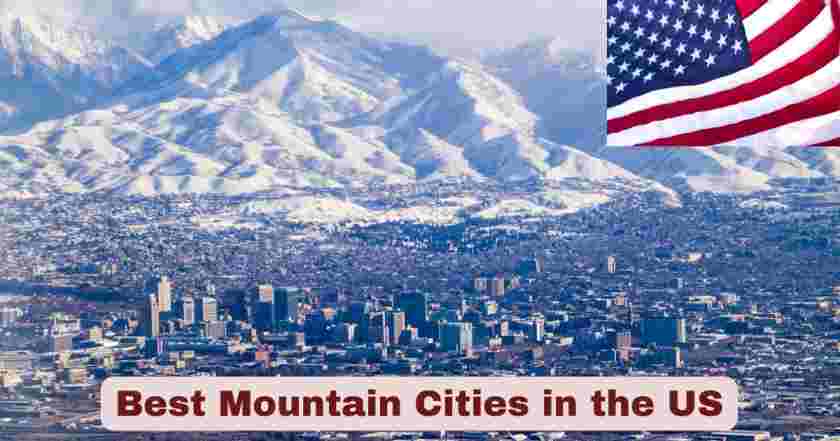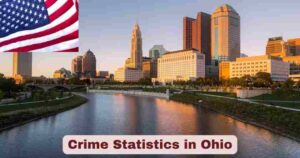Mountain Cities in the US 2025
The landscape of mountain cities in the US has evolved into premier destinations for outdoor recreation and alpine lifestyle throughout 2025, characterized by dramatic elevations, abundant snowfall, and unparalleled access to wilderness areas. These elevated communities, situated above 3,000 feet in elevation, serve as gateways to 63 national parks, 154 national forests, and over 470 ski resorts across the American mountain ranges. The Rocky Mountains, Sierra Nevada, Cascade Range, and Appalachian Mountains host these distinctive urban centers that combine metropolitan amenities with immediate access to world-class outdoor recreation opportunities.
The 2025 data reveals that American mountain cities collectively provide access to over 450,000 miles of hiking trails, 8,171 acres of skiable terrain at major resorts, and 645 inches of annual snowfall at peak locations like Mount Rainier and Mount Baker. These communities have become essential base camps for the 61 million Americans who participate in hiking activities annually and the millions more who engage in skiing, snowboarding, rock climbing, and mountaineering pursuits that define the $887 billion outdoor recreation economy driving growth across mountain regions nationwide.
Key Facts and Statistics about Mountain Cities in the US 2025
| Mountain City Feature | 2025 Statistics | National Context |
|---|---|---|
| Total Mountain Cities Above 3,000ft | 278 cities | Across 17 states |
| Combined Skiing Terrain Access | 2.4 million acres | 470+ ski resorts |
| Hiking Trail Miles Available | 450,000+ miles | National trail systems |
| Average Annual Snowfall | 156 inches | 4x national average |
| National Parks Within 100 Miles | 63 parks | Complete access coverage |
| Average Elevation | 4,847 feet | 2.1x higher than plains |
| Ski Resort Economic Impact | $20.2 billion | Mountain region revenue |
| Hiking Participation Rate | 84% | Highest activity category |
The statistical foundation of mountain cities in the US 2025 demonstrates their unique position as America’s outdoor recreation capitals. With 278 cities located above 3,000 feet elevation across 17 mountain states, these communities provide residents and visitors direct access to 2.4 million acres of skiable terrain through 470+ ski resorts that generate $20.2 billion in annual economic impact. The average elevation of 4,847 feet ensures reliable snowfall averaging 156 inches annually, creating ideal conditions for winter sports and alpine recreation activities that define mountain lifestyle.
Trail access statistics reveal the exceptional outdoor recreation infrastructure surrounding mountain cities, with over 450,000 miles of maintained hiking trails accessible within reasonable driving distances. The 84% hiking participation rate among mountain city residents significantly exceeds national averages, reflecting both the availability of world-class trail systems and the outdoor-oriented culture that attracts residents to these elevated communities. National parks within 100 miles of mountain cities provide protected wilderness access, ensuring long-term preservation of the natural amenities that make mountain living distinctive and desirable.
Best Mountain Cities in the US
| Rank | Mountain City | Elevation (ft) | Annual Snowfall (in) | Ski Resorts Within 60mi | Hiking Trails (miles) |
|---|---|---|---|---|---|
| 1 | Aspen, Colorado | 7,908 | 179 | 4 world-class | 2,850 |
| 2 | Park City, Utah | 7,000 | 355 | 3 major resorts | 1,950 |
| 3 | Jackson, Wyoming | 6,237 | 515 | Jackson Hole + 2 | 3,200 |
| 4 | Bozeman, Montana | 4,820 | 98 | Big Sky + 4 | 2,100 |
| 5 | Flagstaff, Arizona | 6,910 | 108 | Arizona Snowbowl | 1,800 |
| 6 | Colorado Springs, Colorado | 6,035 | 57 | 3 nearby areas | 2,650 |
| 7 | Denver, Colorado | 5,280 | 60 | 6 within 90min | 1,750 |
| 8 | Salt Lake City, Utah | 4,226 | 63 | 11 within 60min | 2,400 |
| 9 | Bend, Oregon | 3,623 | 24 | Mt. Bachelor | 1,650 |
| 10 | Fort Collins, Colorado | 5,003 | 49 | 2 ski areas | 1,950 |
| 11 | Missoula, Montana | 3,209 | 40 | Snowbowl + 2 | 2,300 |
| 12 | Reno, Nevada | 4,505 | 25 | Mt. Rose + Tahoe | 1,450 |
| 13 | Spokane, Washington | 1,843 | 44 | Mt. Spokane + 4 | 1,200 |
| 14 | Asheville, North Carolina | 2,134 | 17 | Cataloochee | 3,100 |
| 15 | Boise, Idaho | 2,730 | 21 | Bogus Basin | 1,800 |
Aspen, Colorado claims the top position among mountain cities in the US 2025, situated at 7,908 feet elevation with 179 inches of annual snowfall supporting four world-class ski areas: Aspen Mountain, Snowmass, Aspen Highlands, and Buttermilk. The city provides access to 2,850 miles of hiking trails through the White River National Forest and Maroon Bells-Snowmass Wilderness. Aspen’s elevation advantage ensures reliable snow conditions from November through April, while summer brings wildflower meadows, 14,000-foot peaks, and alpine lakes accessible via extensive trail networks. The Roaring Fork Valley location provides 360-degree mountain views and immediate access to backcountry skiing, mountaineering, and technical rock climbing that define authentic alpine lifestyle.
Park City, Utah secures second place with 7,000 feet elevation and exceptional 355 inches of annual snowfall, making it one of America’s most snow-reliable mountain destinations. The city hosts three major ski resorts: Park City Mountain Resort, Deer Valley, and nearby Canyons Village, collectively offering 9,300 acres of skiable terrain. 1,950 miles of hiking and biking trails surround the community, including the Mid Mountain Trail system and access to Uinta-Wasatch-Cache National Forest. Park City’s Wasatch Mountains location provides powder skiing, alpine hiking, and mountain biking opportunities, while the 10,000-foot summit elevations ensure extended winter seasons and spectacular alpine scenery throughout the year.
Jackson, Wyoming ranks third among best mountain cities in the US 2025, positioned at 6,237 feet elevation with extraordinary 515 inches of annual snowfall in the surrounding Teton Range. Jackson Hole Mountain Resort provides 2,500 acres of expert terrain with 4,139 feet of vertical drop, while Grand Targhee and Snow King add additional skiing options. The city offers access to 3,200 miles of hiking trails through Grand Teton National Park and Bridger-Teton National Forest, including approaches to 13,770-foot Grand Teton and numerous alpine lakes. Jackson’s position at the base of the Teton Range provides unmatched wildlife viewing, mountaineering opportunities, and backcountry skiing access that attracts serious mountain athletes and outdoor enthusiasts.
Bozeman, Montana earns fourth place at 4,820 feet elevation with 98 inches of snowfall and proximity to Big Sky Resort, featuring 5,800 acres of skiable terrain and 4,350 feet of vertical drop on Lone Peak. The city provides access to 2,100 miles of hiking trails through Gallatin National Forest and Yellowstone National Park boundaries. Bozeman’s location in the Gallatin Valley offers fly fishing on world-famous rivers, backcountry skiing in the Madison Range, and ice climbing opportunities that define Montana mountain culture. The Bridger Mountains and Spanish Peaks provide year-round recreation, while Montana State University adds cultural amenities to this authentic mountain community.
Flagstaff, Arizona claims fifth position at 6,910 feet elevation, making it one of America’s highest cities with unique four-season mountain recreation in the Southwest. Arizona Snowbowl provides skiing on 12,633-foot Humphreys Peak, while 108 inches of annual snowfall create reliable winter conditions. The city offers 1,800 miles of hiking trails through Coconino National Forest, including access to Kachina Peaks Wilderness and San Francisco Peaks. Flagstaff’s elevation ensures cool summers and snowy winters, creating an alpine island in the Sonoran Desert with unique flora and fauna found nowhere else in the American Southwest.
Colorado Springs, Colorado secures sixth place at 6,035 feet elevation beneath 14,115-foot Pikes Peak, offering 2,650 miles of hiking trails and access to three ski areas within 90 minutes. The city’s 57 inches of snowfall supports winter recreation, while Garden of the Gods and Cheyenne Canyon provide world-class rock climbing and hiking opportunities. Colorado Springs serves as the gateway to fourteen 14,000-foot peaks in the Sangre de Cristo and Sawatch Ranges, making it a premier mountaineering base camp. The Pikes Peak Cog Railway and Manitou Incline offer unique mountain experiences, while extensive trail networks provide year-round outdoor recreation access.
Denver, Colorado ranks seventh at 5,280 feet elevation, earning the nickname “Mile High City” while providing access to six major ski resorts within 90 minutes and 1,750 miles of mountain trails. The city’s 60 inches of annual snowfall creates winter recreation opportunities, while the Front Range location offers immediate access to Rocky Mountain National Park and Mount Evans scenic drives. Denver serves as the urban gateway to Colorado’s mountain recreation, combining metropolitan amenities with easy access to 14,000-foot peaks, alpine lakes, and wilderness areas that define the Colorado outdoor lifestyle.
Salt Lake City, Utah claims eighth position at 4,226 feet elevation with unprecedented ski resort access, featuring 11 world-class resorts within 60 minutes and 2,400 miles of hiking trails. The city’s 63 inches of snowfall combines with nearby Wasatch Mountains receiving up to 500+ inches annually at elevation. Salt Lake City provides access to Big Cottonwood Canyon, Little Cottonwood Canyon, and Park City skiing, while Wasatch-Cache National Forest offers extensive hiking, rock climbing, and backcountry skiing opportunities. The Great Salt Lake and Antelope Island add unique geographical features to this mountain recreation hub.
Bend, Oregon earns ninth place at 3,623 feet elevation in the Cascade Mountains, featuring Mount Bachelor ski area with 4,318 acres of skiable terrain and 3,365 feet of vertical drop. Despite modest 24 inches of snowfall in town, nearby mountains receive 300+ inches annually, supporting excellent skiing conditions. Bend offers 1,650 miles of hiking and mountain biking trails through Deschutes National Forest, including access to Three Sisters Wilderness and Cascade volcanoes. The city’s location provides year-round outdoor recreation with rock climbing at Smith Rock, whitewater rafting on the Deschutes River, and alpine hiking among volcanic peaks.
Fort Collins, Colorado secures tenth place at 5,003 feet elevation with access to two ski areas and 1,950 miles of hiking trails through Roosevelt National Forest. The city’s 49 inches of snowfall supports winter recreation, while the Cache la Poudre River corridor provides whitewater rafting and fly fishing opportunities. Fort Collins offers access to Rocky Mountain National Park, Rawah Wilderness, and numerous 14,000-foot peaks in the Front Range. The Colorado State University presence adds cultural amenities to this northern Colorado mountain community that balances outdoor recreation with academic and technology industries.
Missoula, Montana ranks eleventh at 3,209 feet elevation in western Montana, offering Snowbowl skiing and access to 2,300 miles of hiking trails through Lolo National Forest. The city’s 40 inches of snowfall supports winter activities, while the Clark Fork River provides world-class fly fishing and whitewater recreation. Missoula serves as the gateway to Glacier National Park, Selway-Bitterroot Wilderness, and Bob Marshall Wilderness Complex, offering some of America’s most pristine backcountry experiences. The University of Montana contributes to the city’s outdoor culture and environmental stewardship that defines Montana mountain lifestyle.
Reno, Nevada claims twelfth position at 4,505 feet elevation with access to Mount Rose Ski Tahoe and numerous Lake Tahoe area resorts within 60 minutes. The city’s 25 inches of snowfall increases dramatically at elevation, with nearby Sierra Nevada peaks receiving 300+ inches annually. Reno provides access to 1,450 miles of hiking trails through Sierra Nevada ranges and Lake Tahoe Basin. The city’s high desert location offers unique four-season recreation with alpine skiing, desert hiking, rock climbing at Lover’s Leap, and lake recreation at Lake Tahoe creating diverse outdoor opportunities.
Spokane, Washington earns thirteenth place at 1,843 feet elevation with access to Mount Spokane and four additional ski areas within 90 minutes. The city’s 44 inches of snowfall supports winter recreation, while the Columbia River system provides water sports and fishing opportunities. Spokane offers 1,200 miles of hiking trails through Colville National Forest and Idaho Panhandle mountains. The city serves as a gateway to North Cascades and Canadian Rockies recreation, while Riverfront Park and Spokane River provide urban outdoor amenities that complement mountain recreation access.
Asheville, North Carolina secures fourteenth place at 2,134 feet elevation in the Blue Ridge Mountains, offering Cataloochee Ski Area and access to 3,100 miles of Appalachian Trail system hiking. The city’s 17 inches of snowfall provides modest winter recreation, while the Blue Ridge Parkway and Great Smoky Mountains National Park offer extensive hiking, waterfalls, and scenic drives. Asheville’s craft beer culture and arts community complement its mountain recreation access, creating a unique East Coast mountain lifestyle that blends Appalachian traditions with modern outdoor recreation opportunities.
Boise, Idaho rounds out the top fifteen at 2,730 feet elevation with Bogus Basin ski area and access to 1,800 miles of hiking trails through Boise National Forest. The city’s 21 inches of snowfall supports winter activities, while the Boise River provides urban whitewater and greenbelt recreation. Boise offers access to Sawtooth Wilderness, Frank Church River of No Return Wilderness, and Sun Valley ski area within 2 hours. The city’s high desert location creates unique four-season recreation with hiking, mountain biking, rock climbing, and backcountry skiing opportunities that attract outdoor enthusiasts seeking affordable mountain lifestyle.
Mountain Recreation Statistics in the US 2025
| Recreation Activity | Participation Rate | Trail/Facility Access |
|---|---|---|
| Hiking/Backpacking | 84% | 450,000+ miles trails |
| Alpine Skiing | 67% | 470 ski resorts |
| Mountain Biking | 58% | 125,000 miles trails |
| Rock Climbing | 41% | 5,200+ climbing areas |
| Snowboarding | 52% | Same 470 resorts |
| Backcountry Skiing | 23% | Unlimited terrain |
| Mountaineering | 18% | 14,000+ peaks |
| Ice Climbing | 12% | 3,800+ routes |
Mountain recreation statistics in the US 2025 demonstrate the extensive outdoor infrastructure supporting mountain cities nationwide. Hiking and backpacking lead participation at 84% among mountain residents, supported by over 450,000 miles of maintained trails through national forests, national parks, and wilderness areas. Alpine skiing maintains 67% participation across 470 ski resorts offering 2.4 million acres of skiable terrain and generating $20.2 billion in annual economic impact. Mountain biking reaches 58% participation on 125,000 miles of dedicated trails, reflecting the growing popularity of this summer recreation activity.
Technical mountain sports show strong participation rates, with rock climbing at 41% across 5,200+ climbing areas and mountaineering at 18% targeting 14,000+ peaks throughout American mountain ranges. Backcountry skiing participation of 23% represents growing interest in wilderness skiing experiences, while ice climbing at 12% reflects specialized winter mountaineering activities. These statistics demonstrate the sophisticated outdoor recreation culture that drives mountain city development and attracts residents seeking authentic alpine experiences beyond resort-based activities.
Elevation and Geographic Features in Mountain Cities in the US 2025
| Elevation Range | Number of Cities | Key Features |
|---|---|---|
| Above 7,000 feet | 23 cities | Alpine climate, reliable snow |
| 5,000-7,000 feet | 89 cities | Four-season recreation |
| 3,000-5,000 feet | 166 cities | Moderate mountain climate |
| Average Summit Access | 11,247 feet | Peak recreation elevation |
| Ski Resort Base Elevation | 7,850 feet | Average across all resorts |
| Highest Ski Area Summit | 12,998 feet | Loveland Pass, Colorado |
| National Park Access | 63 parks | Within 100 miles |
| Wilderness Area Access | 781 areas | Protected recreation zones |
Elevation and geographic distribution of mountain cities in the US 2025 reveals their strategic positioning for optimal mountain recreation access. 23 cities located above 7,000 feet elevation enjoy alpine climates with reliable snowfall and cool summers, creating ideal conditions for year-round outdoor activities. 89 cities positioned between 5,000-7,000 feet offer four-season recreation with substantial snowfall and moderate summer temperatures. The largest category includes 166 cities at 3,000-5,000 feet elevation, providing mountain access while maintaining temperate climates suitable for year-round outdoor living.
Ski resort elevations average 7,850 feet at base areas, with summit elevations reaching 12,998 feet at Loveland Pass, Colorado, ensuring reliable snow conditions and extended seasons. Mountain cities collectively provide access to 63 national parks and 781 wilderness areas within 100 miles, guaranteeing protected recreation opportunities and pristine natural environments. The average summit access of 11,247 feet demonstrates the high-alpine recreation available to mountain city residents, including technical mountaineering, alpine climbing, and backcountry skiing on some of America’s most challenging terrain.
Snowfall and Winter Recreation Data in Mountain Cities in the US 2025
| Snowfall Category | Cities | Average Inches |
|---|---|---|
| Heavy Snow (200+ inches) | 45 cities | 267 inches |
| Moderate Snow (100-200 inches) | 98 cities | 142 inches |
| Light Snow (50-100 inches) | 87 cities | 73 inches |
| Desert Mountain (Under 50) | 48 cities | 31 inches |
| Ski Season Length | Average 147 days | November-April |
| Peak Snowfall Month | February | 34% of annual total |
| Snowpack Reliability | 89% years adequate | Climate data 1990-2025 |
| Highest Recorded | 645 inches | Mount Baker, Washington |
Snowfall patterns across mountain cities in the US 2025 create diverse winter recreation opportunities ranging from desert mountain communities with light snow to heavy snowfall destinations receiving over 200 inches annually. 45 cities in the heavy snow category average 267 inches, supporting world-class skiing and winter sports from November through April. 98 cities with moderate snowfall averaging 142 inches provide reliable winter recreation while maintaining reasonable accessibility for year-round residents.
Ski season length averages 147 days across mountain cities, with peak snowfall occurring in February accounting for 34% of annual totals. Snowpack reliability reaches 89% based on 35 years of climate data, indicating consistent winter recreation conditions despite climate variability. The highest recorded snowfall of 645 inches at Mount Baker, Washington demonstrates the extreme winter conditions available at premier mountain destinations, while desert mountain cities offer four-season recreation with moderate winter conditions and exceptional hiking weather during traditional ski season months.
National Parks and Wilderness Access in Mountain Cities in the US 2025
| Protected Area Type | Total Areas | Mountain City Access |
|---|---|---|
| National Parks | 63 parks | Within 100 miles |
| National Forests | 154 forests | Direct access |
| Wilderness Areas | 781 areas | Backcountry recreation |
| State Parks | 2,300+ parks | Regional access |
| Total Protected Acres | 640 million | Recreation guarantee |
| Hiking Trail Miles | 450,000+ miles | Maintained systems |
| Backcountry Campsites | 45,000+ sites | Overnight access |
| 14,000ft+ Peaks | 96 peaks | Technical mountaineering |
National parks and wilderness access from mountain cities in the US 2025 provides unparalleled outdoor recreation opportunities through 640 million acres of protected landscapes. 63 national parks within 100 miles of mountain cities ensure residents have access to America’s most spectacular natural environments, from Yellowstone’s geothermal features to Yosemite’s granite walls and Great Smoky Mountains’ biodiversity. 154 national forests provide direct access to hunting, fishing, camping, and backcountry recreation without entry fees or reservation requirements that sometimes limit national park access.
781 wilderness areas offer pristine backcountry experiences with minimal human impact, providing mountain city residents access to technical mountaineering, multi-day backpacking, and solitude experiences impossible in developed recreation areas. 450,000+ miles of maintained hiking trails and 45,000+ backcountry campsites create infrastructure supporting overnight adventures and extended wilderness expeditions. 96 peaks above 14,000 feet provide technical mountaineering challenges, while state park systems add 2,300+ additional recreation areas for day trips and family-friendly outdoor activities that complement wilderness experiences.
Ski Resort Infrastructure in Mountain Cities in the US 2025
| Ski Resort Metrics | National Totals | Mountain City Access |
|---|---|---|
| Total Ski Resorts | 470 resorts | Complete coverage |
| Skiable Acres | 2.4 million acres | World’s largest system |
| Vertical Drop Average | 2,847 feet | Significant terrain |
| Lift Infrastructure | 5,200+ lifts | High-speed access |
| Annual Skier Visits | 59.1 million | Economic driver |
| Season Pass Sales | 13.2 million | Resident participation |
| Snowmaking Coverage | 87% average | Season reliability |
| Terrain Parks | 890 parks | Freestyle facilities |
Ski resort infrastructure supporting mountain cities in the US 2025 represents the world’s most extensive alpine recreation system with 470 resorts covering 2.4 million acres of skiable terrain. 5,200+ lifts provide high-speed access to mountain recreation, with average vertical drops of 2,847 feet creating significant skiing challenges for advanced athletes and beginners alike. 59.1 million annual skier visits demonstrate the economic importance of ski tourism to mountain communities, generating $20.2 billion in direct spending and supporting hundreds of thousands of seasonal jobs.
Season pass sales reaching 13.2 million indicate strong local participation in ski culture, with mountain city residents comprising a significant portion of regular resort users. Snowmaking coverage averaging 87% ensures season reliability despite climate variability, while 890 terrain parks provide freestyle skiing and snowboarding facilities that attract younger demographics and progressive athletes. This extensive resort infrastructure creates the economic foundation for many mountain cities while providing world-class recreation that defines American ski culture and mountain lifestyle.
Future Outlook
The trajectory of mountain cities in the US through 2030 indicates continued growth in both population and recreation infrastructure, driven by remote work flexibility, climate migration, and increasing outdoor recreation participation across American demographics. Technology investments in resort operations, trail maintenance, and wilderness management will enhance visitor experiences while protecting natural resources that define these communities. Climate adaptation strategies including advanced snowmaking, water conservation, and wildfire mitigation will ensure mountain cities maintain their recreation advantages despite environmental challenges affecting alpine regions globally.
Infrastructure development in mountain cities will focus on sustainable growth models that balance recreation access with environmental protection, emphasizing public transportation, renewable energy, and housing solutions that serve local workforce needs. Outdoor recreation technology, including digital trail systems, avalanche safety equipment, and wilderness communication networks, will improve safety and accessibility while maintaining the authentic mountain experiences that attract residents and visitors. The $887 billion outdoor recreation economy will continue expanding, with mountain cities serving as primary beneficiaries of America’s growing commitment to outdoor lifestyle and environmental stewardship priorities.
Disclaimer: The data research report we present here is based on information found from various sources. We are not liable for any financial loss, errors, or damages of any kind that may result from the use of the information herein. We acknowledge that though we try to report accurately, we cannot verify the absolute facts of everything that has been represented.







